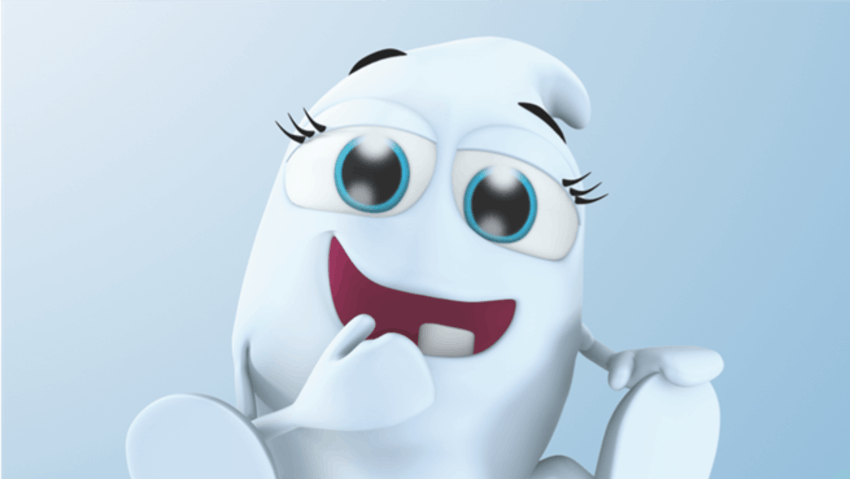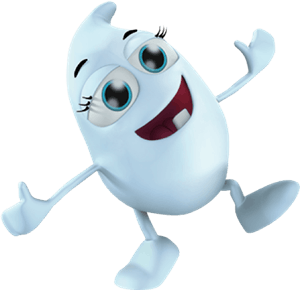Signs of teething and how to soothe them
Teething is a natural part of your baby’s development. While it’s hard to imagine what growing teeth feels like, it’s worth getting to know the signs of this uncomfortable life stage.
When does teething start?
All babies are different, and can start teething anywhere between three months to a year old. Most though will begin showing signs at around six months. Teething symptoms can feel like normal behaviour, making them tricky to spot. But it’s best to be on the lookout for:
- Swollen and red gums
- Flushed cheeks
- Rubbing their ear
- Dribbling more than usual
- Frantically chewing on things
- Generally fussy and irritable
Tracking your child’s tooth timetable
All babies and children are different, but this is a rough timetable to give you an idea of what to expect when:
- 0-6 months – Milk teeth grow in the gums, kicking off early signs of teething.
- 6-12 months – First teeth break through gums, usually in the middle front of their mouth.
- 1-3 years – Milk teeth continue to move into place. Giving most children a full set by the time they are three years old.
- 3-6 years – Adult teeth are growing and getting ready to start coming through. This causes the child’s milk tooth they are going to replace to start to come loose and wobble free.
- 6+ years – Milk teeth will drop out one by one, making room for your child’s stronger adult teeth to come through. By the age of 13, your child should have their permanent teeth, with just their wisdom teeth still to come through.
How many teeth will they grow?
Once teething starts, your child will grow 20 milk teeth in total. Later moving on to 32 adult teeth when their mouth has grown big enough. Both sets are made up of three types of teeth. Each designed to make short work of the different kinds of food we eat.
- Incisors: the flat teeth at the front that are great for biting into food
- Canines: the pointy ones at the side that help us tear tough foods apart
- Molars: the big ones at the back that crush and grind our food into small pieces
Brushing can begin as soon as their first tooth comes through. Helping to create a routine to keep your child’s teeth strong and healthy. Brushing will take gradually longer as more teeth come through. Once they have a full set of teeth, the advice is to brush for 2 minutes, twice a day, with a fluoride toothpaste. Try starting with a milk teeth toothbrush with a small head at first to help you reach all the new arrivals. Then move onto a slightly larger brush as their mouth grows and more teeth move into place.
Tips to help soothe teething pains
If your baby is uncomfortable, there are several things you can do to help them cope with teething:
- Extra cuddles and TLC are the best place to start. They could be confused about what’s happening, and just need reassurance from you.
- Cold objects to chew on can help soothe teething pain. They’re a great distraction too. Try giving them a chilled washcloth or teething ring. Making sure it’s not frozen hard, as this could hurt when biting down.
- Use a clean finger or moistened pad to gently rub your baby's gums. Small amounts of pressure can help ease your baby's discomfort. And the action makes another good distraction.
- Wipe away extra dribble to help avoid their mouth and chin becoming sore. If it looks red you could try applying small amounts of petroleum jelly or a water-based cream to sore areas to help them heal.
- If these home remedies aren’t working, you could try a sugar-free infant teething gel. These may also contain a local anaesthetic, so it’s always best to check with your pharmacist first. Other pain relief like infant paracetamol and ibuprofen can also help with teething pains. But as always, read the label first to check it’s right for your child.
Your little one may begin with rosy cheeks and a drooling grin. But it won’t be that long before they’ll have their first dazzling smile. Remember that milk teeth are more vulnerable than adult teeth. So, take extra care to keep them clean with regular cleaning, using age-appropriate toothbrushes and toothpastes like our Aquafresh Kid’s range.

